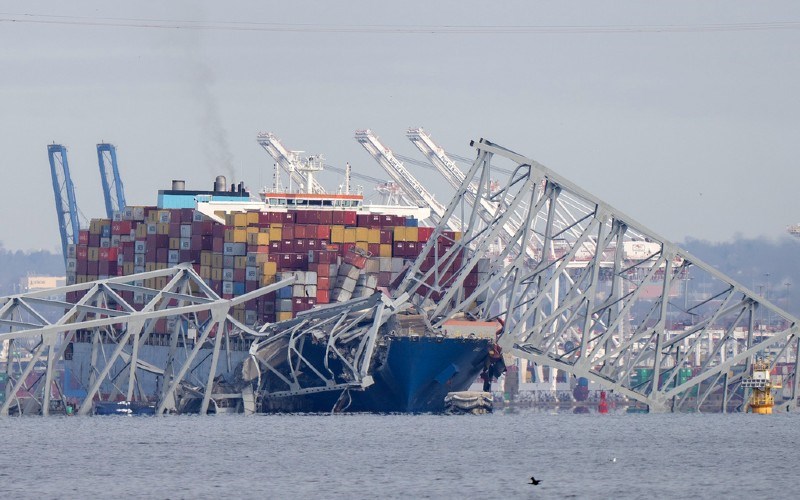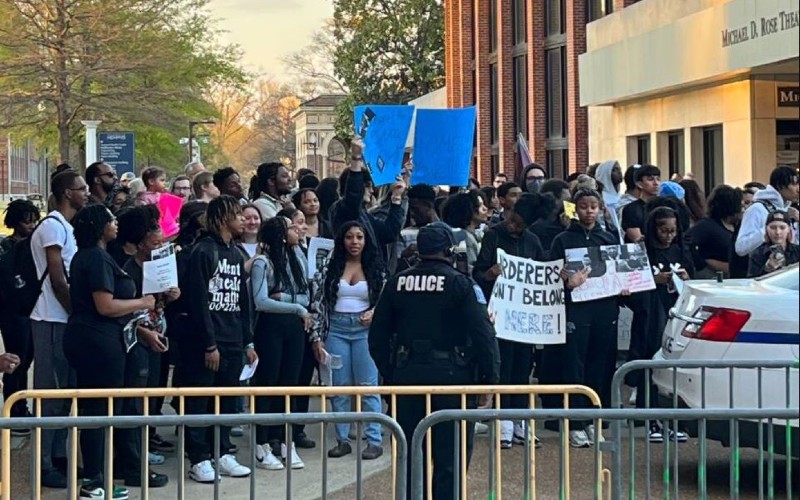From an international cyberattack to bad timing and dumb luck, opinions are many and are varied after container ship The Dali smashed into the famous bridge and sent it into the river.
Jim Nelles, a supply chain expert and U.S. Navy veteran, said on American Family Radio no one should discount the impact of DEI-related hiring and promotions, either.
Singapore-based ship management company Synergy Group, which manages The Dali, makes Diversity, Equity, and Inclusion one of its core values. In fact, "Diversity and Inclusion" is named on the international company's website:
At Synergy we want a workplace that is truly characterized by inclusion and belonging. Diversity for us is more about the variety of our thoughts as a team. Although diversity can be created through deliberate hiring practices, inclusion may not automatically follow. We want our entire workforce to appreciate and show sensitivity to the cultural, and any other, differences that exist in our teams.
The Dali, a 948-foot container ship, was carrying a maximum load when it lost power before ramming the pillar. Lights began to flicker. A harbor pilot and assistant reported power issues and a loss of propulsion prior to the collision, according to a Coast Guard briefing report. A "mayday" distress signal was sent by the ship, and quick-acting police officers stopped traffic just minutes before the bridge hit the water.
So far that has been no direct connection between the bridge accident and DEI in early reporting, but Nelles said he has witnessed the direct impact of DEI-obsessed workplaces in other industries.
“We're seeing it in the medical practice. We're seeing it with the aviation, with Boeing planes falling out of the sky all the time now, and now we saw it with what happened with this ship," Nelles said. "I'm not saying that drove what happened with this ship, but it leads me to believe that they're focused on the wrong thing."
So many companies are so obsessed with DEI and its objectives, he said, that nobody should be surprised if the pronouns of a Synergy employee mattered more than a person's competence to maintain a ship.
"It's dangerous and now we've seen the results again," he warned.
Startling stats about a key port and bridge
In a story for The Gateway Pundit, Nelles put his shipping expertise to work: The bridge collapse shut down the "17th biggest port" in the United States, he wrote, which is the largest importer of trucks and light automobiles.
“The port handled 52.3 million tons of international cargo, worth approximately $80.8 billion in 2023," he wrote. "The port supports more than “15,000 direct jobs and more than 139,000 indirect jobs, generating more than $3 billion in total personal income.”
An estimated 12.4 million vehicles cross the bridge every year, 34,000 daily.
There are conflicting reports as to whether the ship attempted to drop anchor, a move Nelles believes would have averted the collision.
“If they had time to issue a 'Mayday' with enough advance notice for them to shut down that bridge, there's no reason why they weren't able to drop both the anchors on that ship," he told show host Jenna Ellis.
"There have been conflicting reports saying that they dropped one anchor, which doesn't make any sense. You would think you would drop both of them," he said. "So this needs to be the primary focus of the investigation. Why did this not happen? Were they undermanned? Did they not have the proper staffing, or did people just forget their training?” Nelles told Ellis.
A second consideration in early reporting has been the ship took on dirty fuel. It is possible contaminated fuel was a factor in the ship losing power just before the crash, according to Fox News.
Following standard safety procedures would have prevented problems from dirty fuel, Nelles said.
“I have a hard time with that because, again, it either points to potential incompetence or just a lack of following protocol," he explained. "When a ship brings on fuel, it's supposed to do a minimum of two tests for the fuel. One is you just check it to be what's called 'clear and bright' to make sure that there is no particulate matter in the fuel.
“The other thing that you do is an API gravity test to make sure that the chemical makeup of the fuel meets the requirements of the ship. If they had done that, you would not have accepted dirty fuel onto the ship. So, either they didn't do the test or the people doing the test were incompetent,” Nelles said.
Increased attention on power grid
The bridge collapse has also brought focus to infrastructure vulnerabilities.
At present the downing of the Francis Scott Key is not believed to include bad actors. That doesn’t mean the next major accident won’t.
“We ought to be extremely focused on that,” Rep. Randy Weber (R-Texas) said on Washington Watch Tuesday.
The U.S. has already seen a handful of attacks or planned attacks said Weber, citing a previous Baltimore incident, Tacoma, Washington and North Carolina.
Weber told show host Tony Perkins the U.S. needs to increase security at sensitive locations, such as power stations and substations currently protected and fences and barbed wire.
Those facilities probably need concrete walls, he said, citing the 2022 attack on key electrical substations in Moore County, North Carolina.
"Twenty-seven shots were fired, and whoever did this was an expert and knew what they were doing because they targeted all the transformers, and transformer oil tanks, in such a way that they drained all the oil," Weber said.
The two downed substations, owned by Duke Energy, knocked out electricity to most of Moore County's 99,700 residents. Power had been restored to residents five days later.







